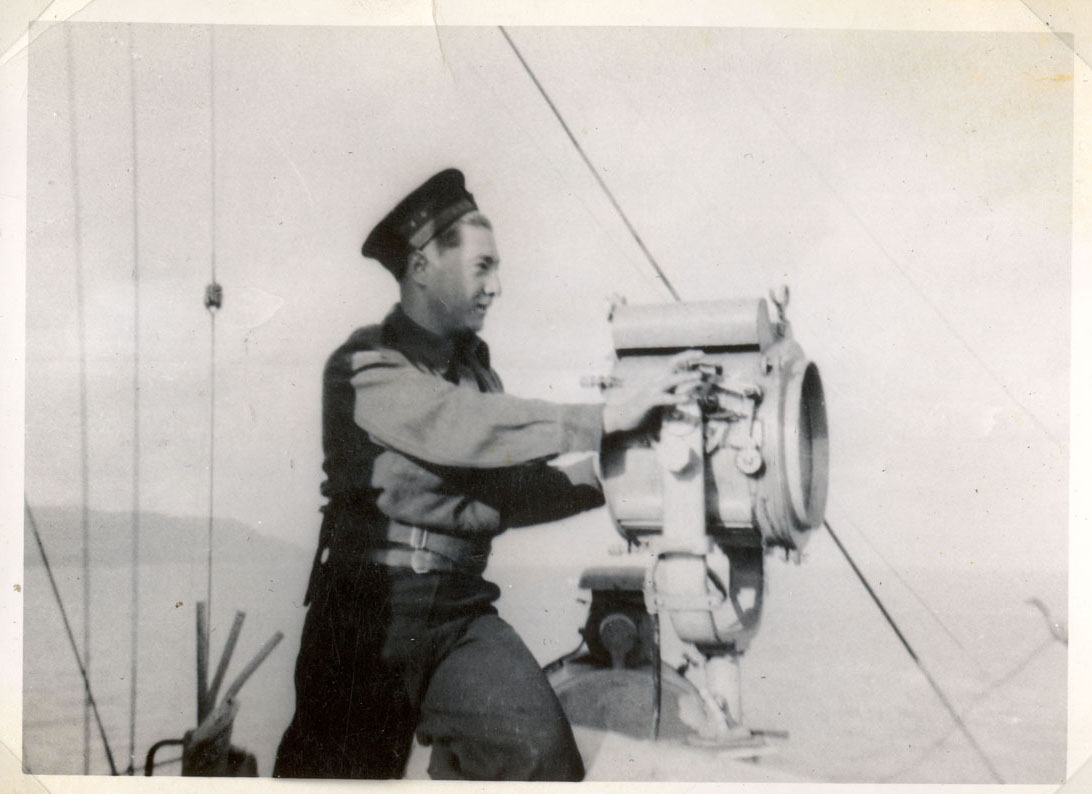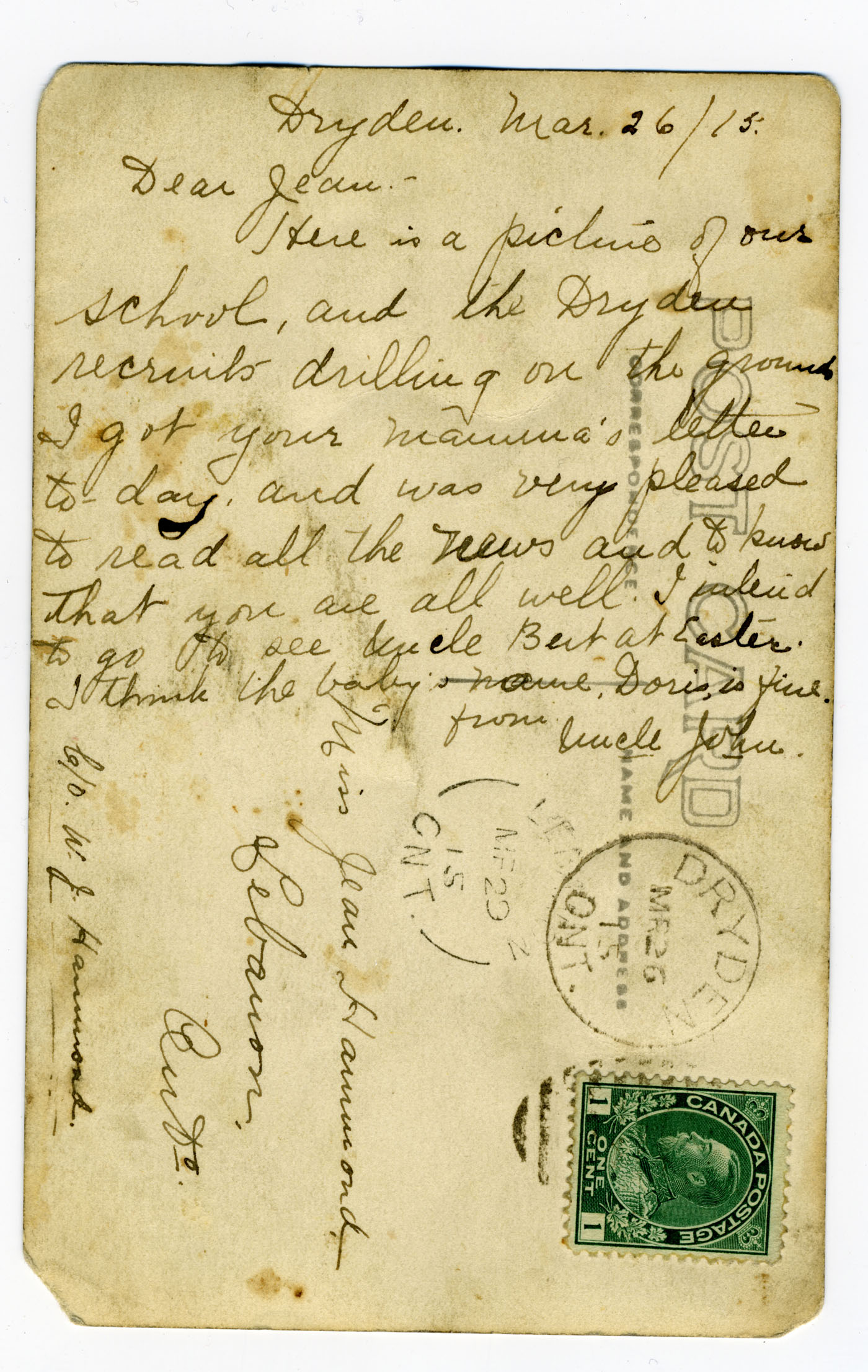During the war, DHS students wrote letters to soldiers who had once attended the school. Some of the enlisted men were stationed on the front lines and others were Prisoners of War (POW). Ray (William) Nicol remembers receiving such a letter while he was enlisted with the Canadian Navy. Ray remembers the students asking him about the nature of his military service.
The Morse code and other signaling methods were taught in the evenings at the high school on Van Horne Avenue. The Morse code is a series of standardized signals that can be transmitted using various methods. For example, Morse code can be transmitted across a wired phone line (telegraph), as a radio signal, or even as a mechanical or visual signal (a flashing light). Each letter of the alphabet, as well as the digits and punctuation symbols has been translated into a series of short and long signals.
Charlie Rankin (a long time Dryden resident) learned his Morse code as well as the basics of radio transmission at Dryden High School. These classes were taught by World War I veterans Tidly Taylor, Charlie Holland and others. (Tidly had a son by the name of Bob Taylor). Tidly Taylor taught Morse code and Charlie Holland taught the basics of radio transmission. This included the construction of a radio transmitter and receiver, and a study of the maximum transmission distances of various radio frequencies. Charlie Rankin learned the basic skills at the High School and then continued his training with the Canadian Navy in Montreal.
Pictured here is Ted Lappage, a Dryden resident who served as a signalman with the Canadian Navy from 1942-1945. Ted is sending Morse code messages using a flashing beam of light. Ted served on the HMCS Gatineau and other Corvette type navy warships.

Physical training and conditioning were taught also taught at DHS during the war period. Those classes were taught by then principal of the school Mr. J.D Smith. Charlie Rankin remembers Mr. Jim Smith as someone who was strict and who did not have much of a sense of humour. Charlie added that Mr. Smith was trying his best to teach discipline to the young potential military recruits. Part of the training included a run from the school on Van Horne Avenue to the government docks in all types of inclement weather. Charlie Rankin lost a year of school due to Mr. Smiths spartan training methods. Though Charlie had a bad chest cold, he continued training under Mr. Smith and caught pleurisy (a pneumonia type illness).
Defense training courses were taught at DHS as well as other high schools in Northwestern Ontario. Defense training courses included the detailed study of the British Lee-Enfield rifle. High school boys and girls were trained in the characteristics, operation and disassembly of the rifle. One female student of Port Arthur Technical Institute (now Hilcrest) remembers having sand bags piled on the desks in the classroom while the students were taught the correct position to maintain while sighting the rifle. There were rifleman competitions at DHS between the girls and boys and it was embarrassing to the boys when they lost the competition to the girls. The defense training classes also included military marching, standing at attention and the proper saluting of an officer
Aircraft recognition courses were also on the curriculum in Ontario schools. Students were shown flash cards of different military aircraft and were expected to identify the plane and know basic characteristics of the aircraft such as length of the wingspan, range and maximum payload.
Finally, Dryden High School has had a long reputation of charitable donations to various causes. The Dryden Observer published a short article in the fall of 1944 describing how the students raised their own money to purchase 38 boxes of chocolate to send to alumni fighting overseas.
The post card below shows the 3rd Contingent training in front of the public school building on Van Horne Avenue. The schools contribution to the war effort during the First World War is not known. The date written on the back of the card is March 26th, 1918 and was sent by John Adams to a family member in southern Ontario. On the card Mr. Adams affectionately writes Here is our school.. John Adams was instrumental in starting secondary education in Dryden around 1912. John Adams was a great uncle to long time Dryden resident Pansy Howell.

